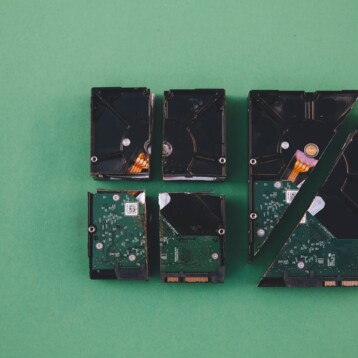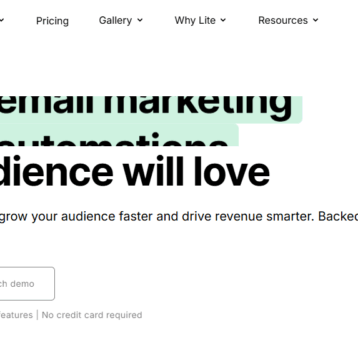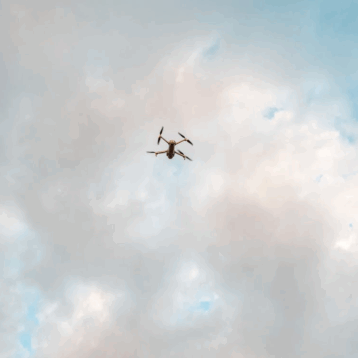CES 2009 helped mark a number of upcoming technological trends that have either already reached the market or are about to do so in the next 12 months. 3D displays as well as flexible and advanced organic displays, pocket projectors, and cheap HD pocket camcorders; all of these and more have been on display and are in the works for 2009.
 |
nVIDIA’s GeForce 3D Vision system
on the Glacier Media Systems booth |
|
CES 2009 brought with it a number of technologies which were on display by more than one company. Although we have seen advanced 3D display technology at CES 2008 and even as far back CeBIT 2007, it seems that 2009 will finally be the year that this technology will reach the more general public. Our assessment is based on a number of factors including the CES release of nVIDIA’s new GeForce 3D Vision system which, according to the company, supports “out of the box” over 300 existing games – a fact which by itself will probably help promote the technology. Although we only had a chance to try nVIDIA’s GeForce 3D Vision system for a short time at CES and can’t confirm the company’s claims regarding a headache free experience, even after a long playing session, we can state that it adds another dimension which contributes to the realism of the game. nVIDIA’s technology is also fairly cheap, requiring only the special glasses and a transmitter alongside nVIDIA’s GPU (something which many gamers already have).
(An important correction: some readers have remarked correctly that the GeForce 3D Vision system requires a 120 Hz LCD or a DLP HDTV to work – this significantly limits the number of potential users at this point in time).
 |
| IZ3D display |
|
Other companies such as IZ3D also showcased their existing 3D gaming rigs based on their unique display technology. According to IZ3D the technology works when “left and right image information streams to the graphics card are converted by the iZ3D algorithm into back and front information. The back and front information is transmitted to the back and front panels of the iZ3D monitor. The back panel information is then combined with the information on the front that is a mix of depth cues intended for the left eye, when polarized to 45 degrees and for the right eye when polarized to 135 degrees. The superimposed images, which are different for the left eye and the right eye, same as observed in nature, are sent to the brain simultaneously where the images are combined into one 3D image.” Other 3D solutions on CES varied in their capabilities; some, like the one showcased at the Sony booth, where still in the prototype stages and although that specific unit (which was playing a soccer match in 3D) looked spectacular, it’s clear that it will be a long time before we will be able to see the technology in wide spread use as it requires besides the glasses a unique, expensive display and (probably) special 3D content.
As a side note we have also learned that the ever vigilant adult entertainment industry is already capitalizing on the advances in the 3D market and at the 2009 adult entertainment exhibition (which corresponded with CES this year) at least one company (
Glacier Media Systems) was able to adapt nVIDIA’s GeForce 3D Vision system for adult content.
 |
| Samsung OLED prototype |
|
Moving on from 3D displays, another type of advanced display technology which made an impact at CES 2009 were Organic Light Emitting Diodes (OLED). We were actually somewhat disappointed with the lack of new large OLED models from the big names in the industry such as Sony and Samsung which did not bring forward anything larger than their existing 27″-31″ prototypes already on display at CES 2008 (this is despite Samsung showcasing a 50″ OLED prototype prior to CES which reportedly suffered from some problems). On the bright side we did see a growing verity of smaller OLED displays which are already available on the market or set to launch later this year. Kodak was showcasing its magnificent (but sadly tiny) 7.6″ OLED wireless picture frame, which actually looked much better on the Microsoft booth (as part of a future digital home setup), probably due to the more eye catching content which was fed into it (the frame can play 800×480 video in amazingly vivid colors). Although the unit price has dropped to around $850 since it was launched just a couple of months ago, it’s still a premium product and we expect OLEDs of similar size to stay this way for at least another 12-18 months.
 |
| LG 15″ super thin OLED display |
|
A very exciting product which supposedly should launch by the end of 2009 was on display on LG’s booth. This 15″ OLED monitor (actually AMOLED) is less than one millimeter thick (actually 0.8mm) making it the thinnest display on display at CES according to LG. No pricing was released, but we will be fairly surprised if this unit ends up costing significantly less than Sony’s existing $2000 11″ OLED display. Talking about Sony, although the company did not display any new OLED large screen prototypes they did show something interesting related to the technology at their 2009 CES booth. Although very small, the new Sony 2″ flexible OLED prototype could mark the future of this very exciting technology where thin, light, power efficient, and high performance OLEDs (both in terms of color and contrast) will become flexible, allowing for the first time new bendable color displays for applications such as mobile media players, electronic books (Sony specifically mentioned this application when talking about the technology), and even bendable computers. Although very exciting, we (and Sony) are not expecting any consumer based bendable OLED products within the next 12 months.
 |
Sony prototype flexible OLED display
– the future of consumer electronic
displays? (click to watch the video) |
|
The only area where OLEDs are already relatively widespread today is ultra small displays (2.5″- 3″ range). In the last several months many companies in various areas have incorporated this technology into their products, including portable media players, cameras, cell phones, and even internet radios. This trend is only going to expand in 2009 and as prices go down we will probably see more and more OLED based portable products which will specifically benefit from the technology’s ultra low power consumption.
As we expected, portable micro projectors were all the rage at CES 2009 with several products already on the market and many others planned to be released during 2009. Despite their basic promise to deliver a large video image (up to 50″ or so) in a pocket size form factor, the current crop of tiny LED based projectors from all manufacturers is lacking in both resolution (only up to VGA) but more importantly in brightness. None of the projectors that we saw were able to cope with even a small amount of light and still produce a decent image (if at all). We will defiantly be waiting for the next generation of this technology, which might appear by the end of this year, before we could recommend these products to anybody who is not an early adopter or has a very specific need.
 |
| Sony upcoming MHS-PM1 mini HD camcorder |
|
Wrapping up the first part of our look at CES 2009 and future trends is a new type of transportable, inexpensive devices which made their début this year. Portable, cheap, and rugged, these new micro hand held HD camcorders from several manufacturers appeared at CES for the first time. Kodak showcased its ZX1, which can capture 720p resolution videos in up to 60fps while being weatherproof and fairly ruggedized because of its SDHC memory for storage, all with a very low price tag of $150. Sony also introduced its own version of a tiny, cheap HD camcorder called the MHS-PM1 Webbie HD with some fairly similar specs. Although the image quality on these new tiny so-called “HD” camcorders is nowhere near traditional consumer HD camcorders, we do see a growing market for them in 2009 and given their very low initial price point (the PM1 will cost just under $170) it will be interesting to see how the next generation of these devices will evolve.
In the next part of TFOT’s converge of CES 2009 and future trends we shall cover several other technologies appearing at CES, including wireless transfer technologies for both data and video as well as wireless power and fuel cell technologies and much more.
















